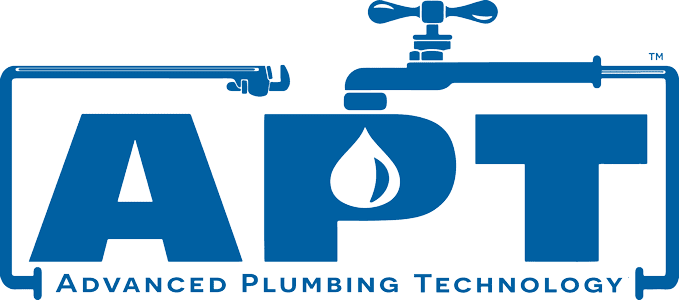Rainwater Harvesting Systems: Using Plumbing to Collect Nature’s Gift
September 24th, 2023Posted by Brian Shoemaker
At Advanced Plumbing Technology, we understand the importance of sustainable water management in today’s world. As environmental concerns grow, individuals and communities are seeking innovative ways to conserve and harness natural resources. One such solution that has gained significant attention is rainwater harvesting systems. These systems present an ingenious method to collect and utilize rainwater for various purposes, effectively reducing water consumption and minimizing strain on local water supplies. In this comprehensive guide, we delve into the world of rainwater harvesting systems, exploring their benefits, components, installation process, and the positive impact they can have on both the environment and your budget.
Understanding Rainwater Harvesting Systems
Rainwater harvesting is a practice that involves collecting and storing rainwater for later use. This harvested rainwater can be used for a wide range of purposes, including irrigation, flushing toilets, washing clothes, and even as a source of potable water with proper treatment. The key components of a rainwater harvesting system include a collection surface, a conveyance system, storage tanks, filtration mechanisms, and a distribution system.
Benefits of Rainwater Harvesting Systems
Environmental Impact
Rainwater harvesting systems offer significant environmental benefits. By capturing rainwater that would otherwise flow into stormwater drains, these systems help reduce the risk of urban flooding and erosion. Moreover, the practice reduces the burden on municipal water treatment facilities, resulting in lower energy consumption and decreased demand on local water sources.
Water Conservation
Conservation of water is a critical concern, especially in regions prone to drought. Rainwater harvesting systems contribute to water conservation by providing an alternative water source for non-potable needs, thereby decreasing reliance on freshwater supplies. This, in turn, helps preserve local ecosystems and supports a more sustainable water cycle.
Cost Savings
Implementing a rainwater harvesting system can lead to substantial cost savings over time. By using collected rainwater for tasks like landscape irrigation and toilet flushing, households and businesses can significantly reduce their water bills. Additionally, some municipalities offer incentives or rebates for installing such systems, further enhancing the financial benefits.
Self-Sufficiency
Rainwater harvesting systems promote self-sufficiency in water supply. During times of water scarcity or restrictions, individuals with these systems in place are better equipped to manage their water needs independently. This level of resilience is invaluable, particularly in areas where water availability can be unpredictable.
Components of a Rainwater Harvesting System
Collection Surface
The collection surface is where rainwater is initially gathered before it is directed into the system. Common collection surfaces include rooftops, which provide a large and consistent area for water capture. It’s important to ensure that the collection surface is clean and free from contaminants to maintain water quality.
Conveyance System
The conveyance system consists of gutters and downspouts that channel rainwater from the collection surface to the storage tanks. Proper design and installation of the conveyance system are crucial to ensure efficient water flow and minimize losses due to overflow or leaks.
Storage Tanks
Storage tanks are where harvested rainwater is stored for later use. These tanks come in various sizes and materials, such as polyethylene, fiberglass, or concrete. The choice of tank depends on factors like available space, intended usage, and local regulations.
Filtration Mechanisms
Rainwater can pick up debris and contaminants from the collection surface and conveyance system. To ensure water quality, filtration mechanisms such as mesh screens and sediment filters are integrated into the system. These components prevent debris from entering the storage tanks and improve the overall purity of the harvested water.
Distribution System
The distribution system carries the harvested rainwater from the storage tanks to the designated points of use. Depending on the intended applications, this can involve gravity-fed distribution or the use of pumps to pressurize the water for efficient delivery.
Installation Process
Installing a rainwater harvesting system requires careful planning and execution. Here’s a simplified overview of the installation process:
Assessment and Design
Before installation, a thorough assessment of the site is conducted to determine the most suitable components and layout for the system. Factors such as local climate, average rainfall, and intended usage play a role in designing an efficient system.
Collection Surface Preparation
The collection surface, usually a rooftop, is inspected and prepared to ensure proper water flow to the gutters and downspouts. Any debris or blockages that could potentially contaminate the harvested water are removed.
Conveyance System Installation
Gutters and downspouts are installed to guide rainwater from the collection surface to the storage tanks. Proper gradient and sizing are crucial to prevent overflow and ensure optimal water flow.
Storage Tank Placement
Storage tanks are strategically placed to optimize space and accessibility. Depending on the system’s design, tanks can be located above or below ground. Adequate foundation and support are provided to ensure the tanks remain stable.
Filtration Integration
Filtration mechanisms are integrated into the system to ensure water quality. This may involve installing mesh screens, sediment filters, and other treatment methods to remove impurities.
Distribution System Setup
The distribution system is set up to deliver harvested rainwater to the intended points of use. Valves, pipes, and pumps are installed as needed to facilitate efficient water distribution.
Maintenance and Monitoring
Regular maintenance is essential to keep the rainwater harvesting system functioning optimally. This includes cleaning filters, checking for leaks, and ensuring all components are in good condition. Monitoring water quality is also crucial to prevent contamination.
Conclusion
Rainwater harvesting systems present a sustainable and innovative solution to address water scarcity and environmental concerns. By harnessing the power of plumbing technology, we can effectively collect and utilize nature’s gift in a responsible and efficient manner. The benefits of rainwater harvesting systems extend beyond cost savings—they contribute to water conservation, environmental preservation, and individual self-sufficiency.
